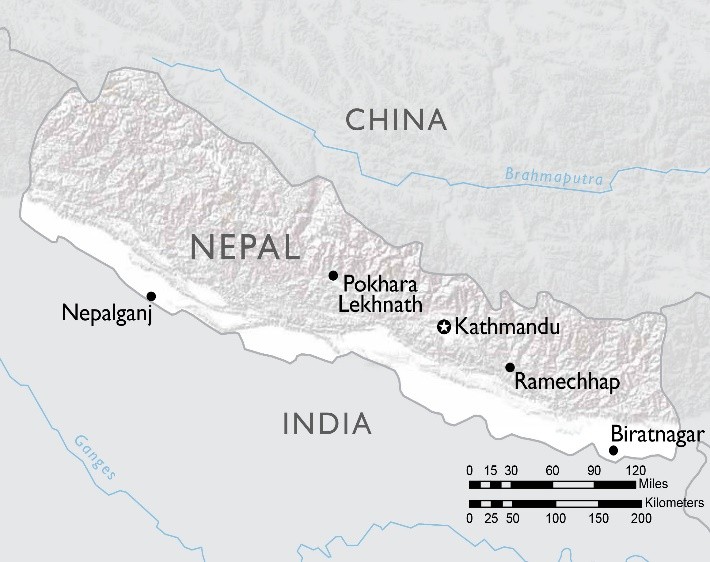Home » What We Do » Agriculture and Food Security » Food Assistance » Country Fact Sheets » Food Assistance Fact Sheet - Nepal
- What We Do
- Agriculture and Food Security
- Democracy, Human Rights and Governance
- Economic Growth and Trade
- Education
- Ending Extreme Poverty
- Environment and Global Climate Change
- Gender Equality and Women's Empowerment
- Global Health
- Water and Sanitation
- Working in Crises and Conflict
- U.S. Global Development Lab

August 14, 2017
Situation
- Susceptibility to natural disasters, vulnerability to price fluctuations in agriculture-dependent regions, civil unrest, challenging geography and poor infrastructure have contributed to persistent food insecurity in Nepal. Since a decade-long civil war ended in 2006, Nepal has made slow social progress, with much of its population still in poverty. According to the UN World Food Program, one-quarter of the nation’s population lives on $1.25 or less per day.
-
On April 25, 2015, a magnitude 7.8 earthquake struck Nepal, killing nearly 9,000 people and displacing more than 58,000. The earthquake and its aftershocks severely affected food security in the country, leaving more than 1.4 million people in need of food assistance in all earthquake-affected areas.
- While food security has generally improved across Nepal since 2015, the Food and Agriculture Organization of the UN (FAO) reports that several areas, particularly in the mountains of the central and mid- and far-western regions, remain food insecure. According to the UN World Health Organization, 40 percent of children under five in Nepal are stunted, 29 percent are underweight and 11 percent are wasted. In 2017, FAO expects that increased cereal production and increased income from agricultural activities will improve the food security situation of subsistence farmers in the areas most affected by the earthquake.
Response
- The Office of Food for Peace (FFP) partners with Mercy Corps through its five-year resilience-focused development program—Promoting Agriculture, Health and Alternative Livelihoods (PAHAL)—targeting 1 million beneficiaries in communities with high poverty and malnutrition rates in 14 districts of Nepal’s mid- and far-western regions. PAHAL aims to improve the nutritional status of its beneficiaries by strengthening livelihoods and increasing the capacity of vulnerable households to prevent, mitigate, adapt to, and recover from shocks and stresses.
- FFP also partners with Save the Children (SCF) to implement Sabal, a five-year community resilience program that targets 1 million beneficiaries in 11 districts of Nepal’s central and eastern regions. After the April 2015 earthquake, FFP and SCF modified Sabal to expand its coverage and focus on strengthening the abilities of households and communities to adapt to shocks.
Food for Peace Contributions
Total Contributions:
| U.S. Dollars | Metric Tons | |
|---|---|---|
| Fiscal Year 2017 | ---- | ---- |
| Fiscal Year 2016 | $7.3 million | 1,348 MT |
| Fiscal Year 2015 | $9.4 million | 3,155 MT |
Note: FAO: Food and Agriculture Organization of the UN; FFP: Food for Peace; MT: Metric Ton.







Comment
Make a general inquiry or suggest an improvement.